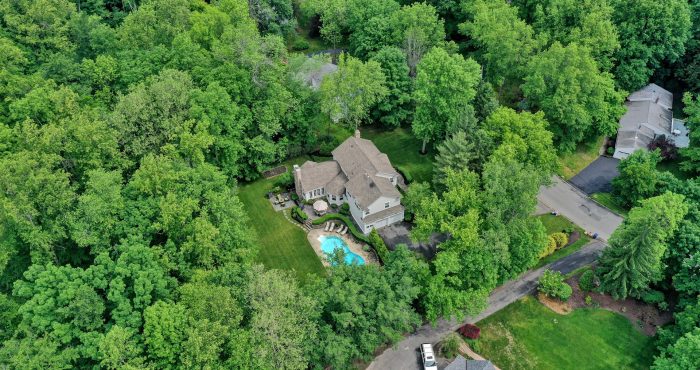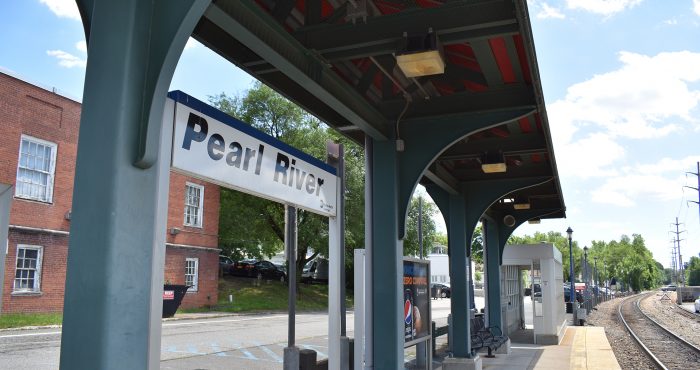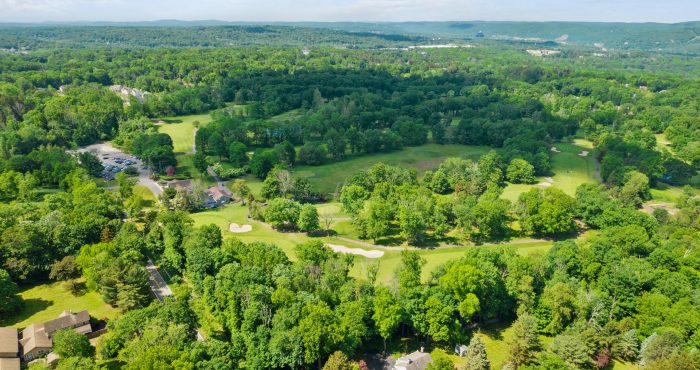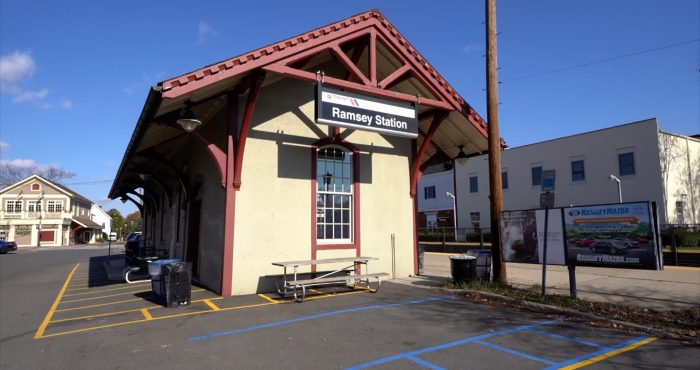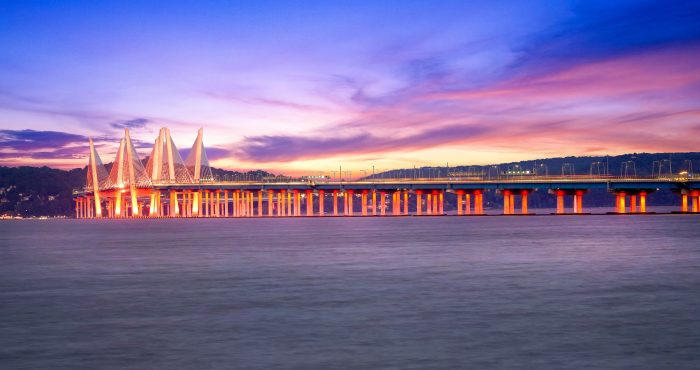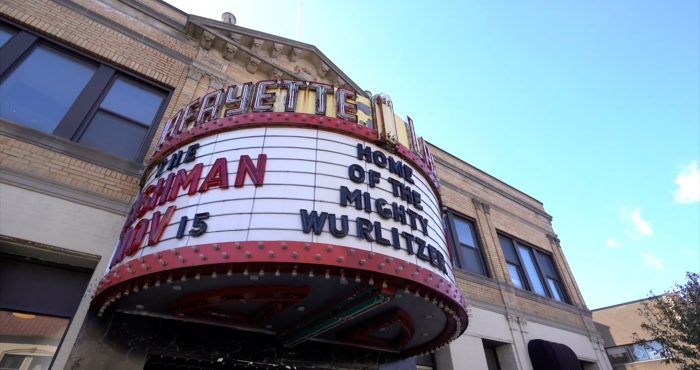
Bergen County, New Jersey
You found the right website if you are searching for homes for sale in Bergen County, NJ. Our website has EVERY Bergen County home for sale in New Jersey listed with New Jersey MLS (NJMLS) & OneKey MLS (OKMLS).
Bergen County is the most populous county in the U.S. state of New Jersey. As of the 2020 United States Census, the county’s population was 955,732, an increase of 50,616 (5.6%) from the 905,116 residents enumerated in the 2010 census by the United States Census Bureau, which in turn represented an increase of 20,998 (2.4%) from the 884,118 counted in the 2000 Census. Located in the northeastern corner of New Jersey and its Gateway Region, Bergen County is part of the New York City metropolitan area and is directly across the Hudson River from Manhattan, to which it is connected by the George Washington Bridge.
Living in Bergen County, NJ
Bergen County is divided into 70 municipalities, but has no large cities. Its most populous place, with 43,010 residents at the time of the 2010 census, is Hackensack, which is also its county seat. Mahwah covered the largest area of any municipality, at 26.19 square miles (67.8 km2).
Etymology
The origin of the name of Bergen County is a matter of debate. It is believed that the county is named for one of the earliest settlements, Bergen, in modern-day Hudson County. However, the origin of the township’s name is debated. Several sources attribute the name to Bergen, Norway, while others attribute it to Bergen, North Holland in the Netherlands. Some sources say that the name is derived from one of the earliest settlers of New Amsterdam (now New York City), Hans Hansen Bergen, a native of Norway, who arrived in New Netherland in 1633.
History
At the time of first European contact, Bergen County was inhabited by Native American people, particularly the Lenape Nation, whose sub-groups included the Tappan, Hackensack, and Rumachenanck (later called the Haverstraw), as named by the Dutch colonists. Some of their descendants are included among the Ramapough Mountain Indians, recognized as a tribe by the state in 1980. Their ancestors had moved into the mountains to escape encroachment by Dutch and English colonists. Their descendants reside mostly in the northwest of the county, in nearby Passaic County and in Rockland County, New York, tracing their Lenape ancestry to speakers of the Munsee language, one of three major dialects of their language. Over the years, they absorbed other ethnicities by intermarriage.
In the 17th century, the Dutch considered the area comprising today’s Bergen and Hudson counties as part of New Netherland, their colonial province of the Dutch Republic. The Dutch claimed it after Henry Hudson (sailing for the Dutch East India Company) explored Newark Bay and anchored his ship at Weehawken Cove in 1609. From an early date, the Dutch began to import African slaves to fill their labor needs. Bergen County eventually was the largest slaveholding county in the state, with nearly 20% of its population consisting of slaves in 1800. The African slaves were used for labor at the ports to support shipping, as well as for domestic servants, trades, and farm labor.
Early settlement attempts by the Dutch included Pavonia (1633), Vriessendael (1640), and Achter Col (1642), but the Native Americans repelled these settlements in Kieft’s War (1643–1645) and the Peach Tree War (1655–1660). European settlers returned to the western shores of the Hudson River in the 1660 formation of Bergen Township, which would become the first permanent European settlement in the territory of present-day New Jersey.
During the Second Anglo-Dutch War, on August 27, 1664, New Amsterdam’s governor Peter Stuyvesant surrendered to the English Navy. The English organized the Province of New Jersey in 1665, later splitting the territory into East Jersey and West Jersey in 1674. On November 30, 1675, the settlement Bergen and surrounding plantations and settlements were called Bergen County in an act passed by the province’s General Assembly. In 1683, Bergen (along with the three other original counties of East Jersey) was officially recognized as an independent county by the Provincial Assembly.
Initially, Bergen County consisted of only the land between the Hudson River and the Hackensack River, extending north to the border between East Jersey and New York. In January 1709, the boundaries were extended to include all of the current territory of Hudson County (formed in 1840) and portions of the current territory of Passaic County (formed in 1837). The 1709 borders were described as follows:
“Beginning at Constable’s Hook, so along the bay and Hudson’s River to the partition point between New Jersey and the province of New York; along this line and the line between East and West Jersey† to the Pequaneck River; down the Pequaneck and Passaic Rivers to the sound; and so following the sound to Constable’s Hook the place of beginning.”
† The line between East and West Jersey here referred to is not the line finally adopted and known as the Lawrence line, which was run by John Lawrence in September and October 1743. It was the compromise line agreed upon between Governors Daniel Coxe and Robert Barclay in 1682, which ran a little north of Morristown to the Passaic River; thence up the Pequaneck to forty-one degrees of north latitude; and thence by a straight line due east to the New York State line. This line being afterward objected to by the East Jersey proprietors, the latter procured the running of the Lawrence line.
Bergen was the location of several battles and troop movements during the American Revolutionary War. Fort Lee’s location on the bluffs of the New Jersey Palisades, opposite Fort Washington in Manhattan, made it a strategic position during the war. In November 1776, the Battle of Fort Lee took place as part of a British plan to capture George Washington and to crush the Continental Army, whose forces were divided and located in Fort Lee and Hackensack. After abandoning the defenses in Fort Lee and leaving behind considerable supplies, the Continental forces staged a hasty retreat through present-day Englewood, Teaneck, and Bergenfield, and across the Hackensack River at New Bridge Landing, one of the few sites where the river was crossed by a bridge. They destroyed the bridge to delay the British assault on Washington’s headquarters in the village of Hackensack. The next day, George Washington retreated to Newark and left Hackensack via Polifly Road. British forces pursued, and Washington continued to retreat across New Jersey. The retreat allowed American forces to escape capture and regroup for subsequent successes against the British elsewhere in New Jersey later that winter. Soon after the Battle of Princeton in January 1777, British forces realized that they couldn’t spread themselves thin across New Jersey. Local militia retook Hackensack and the rest of Bergen County. Bergen County saw skirmishes throughout the war as armies from both sides maneuvered across the countryside.
The Baylor Massacre took place in 1778 in River Vale, resulting in severe losses for the Continentals.
In 1837, Passaic County was formed from parts of Bergen and Essex counties. In 1840, Hudson County was formed from Bergen. These two divisions took roughly 13,000 residents (nearly half of the previous population) from the county’s rolls.
In 1852, the Erie Railroad began operating major rail services from Jersey City on the Hudson River to points north and west via leased right-of-way in the county. This became known as the Erie Main Line, and is still in use for passenger service today. The Erie later leased two other railroads built in the 1850s and 1860s, later known as the Pascack Valley Line and the Northern Branch, and in 1881 built a cutoff, now the Bergen County Line. There were two other rail lines in the county, ultimately known as the West Shore Railroad and the New York, Susquehanna, and Western.
In 1894, state law was changed to allow easy formation of municipalities with the Borough form of government. This led to the “boroughitis” phenomenon, in which many new municipalities were created in a span of a few years. There were 26 boroughs that were formed in the county in 1894 alone, with two more boroughs (and one new township) formed in 1895.
On January 11, 1917, the Kingsland Explosion took place at a munitions factory in what is today Lyndhurst. The explosion is believed to have been an act of sabotage by German agents, as the munitions in question were destined for Russia, part of the U.S.’s effort to supply allies before entrance into World War I. After the U.S. entry into the war in April 1917, Camp Merritt was created in eastern Bergen County for troop staging. Beginning operations in August 1917, it housed 50,000 soldiers at a time, staging them for deployment to Europe via Hoboken. Camp Merritt was decommissioned in November 1919.
The George Washington Bridge was completed in 1931, linking Fort Lee to Manhattan. This connection spurred rapid development in the post-World War II era, developing much of the county to suburban levels. Two lanes were added to the upper level in 1946 and a second deck of traffic on the bridge was completed in 1962, expanding its capacity to 14 lanes.
In 1955, the United States Army created a Nike Missile station at Campgaw Mountain (in the west of the county) for the defense of the New York Metropolitan Area from strategic bombers. In 1959, the site was upgraded to house Nike-Hercules Missiles with increased range, speed, and payload characteristics. The missile site closed in June 1971.
Geography
Bergen County is located at the northeastern corner of the state of New Jersey and is bordered by Rockland County, New York to the north; by Manhattan and the Bronx in New York City, as well as by Westchester County, New York, across the Hudson River to the east; and within New Jersey, by Hudson County as well as a small border with Essex County to the south, and by Passaic County to the west.
According to the United States Census Bureau, the county had a total area of 246.671 square miles (638.87 km2), of which 233.009 square miles (603.49 km2) (94.5%) was land and 13.662 square miles (35.38 km2) (5.5%) was water.
Bergen County’s highest elevation is Bald Mountain near the New York state line in Mahwah, at 1,164 feet (355 m) above sea level. The county’s lowest point is sea level, along the Hudson River, which in this region is a tidal estuary.
The sharp cliffs of the New Jersey Palisades lift much of the eastern boundary of the county up from the Hudson River. The relief becomes less pronounced across the middle section of the county, much of it being located in the Hackensack River valley or the Pascack Valley. In the northwestern portion of the county, Bergen County becomes hilly again and shares the Ramapo Mountains with Rockland County, New York.
The damming of the Hackensack River and a tributary, the Pascack Brook, produced three reservoirs in the county, Woodcliff Lake Reservoir (which impounds one billion gallons of water), Lake Tappan (3.5 billion gallons), and Oradell Reservoir, which allows United Water to provide drinking water to 750,000 residents of northern New Jersey, mostly in Bergen and Hudson counties. The Hackensack River drains the eastern portion of the county through the New Jersey Meadowlands, a wetlands area in the southern portion of the county. The central portion is drained by the Saddle River and the western portion is drained by the Ramapo River. Both of these are tributaries of the Passaic River, which forms a section of the southwestern border of the county.
Climate
Southeastern Bergen County lies at the edge of the humid subtropical climate zone (Cfa) according to the Köppen climate classification because its coldest month (January) averages above 26.6 °F / -3 °C. In part due to Bergen’s coastal location, its lower elevation, and the partial shielding of the county from colder air by the three ridges of the Watchung Mountains as well as by the higher Appalachians, the climate of Bergen County is milder than in New Jersey counties further inland such as Sussex County. Bergen County has a moderately sunny climate, averaging between 2,400 and 2,800 hours of sunshine annually.
In recent years, average temperatures in the county seat of Hackensack have ranged from a low of 19 °F (−7 °C) in January to a high of 86 °F (30 °C) in July, although a record low of −15 °F (−26 °C) was recorded in February 1934 and a record high of 106 °F (41 °C) was recorded in July 1936. Average monthly precipitation ranged from 3.21 inches (82 mm) in February to 4.60 inches (117 mm) in July.
Average monthly temperatures at the interchange of Route 17 and MacArthur Boulevard in Mahwah range from 28.5 °F in January to 73.8 °F in July. Using the 0 °C January isotherm, most of Bergen has a hot-summer humid continental climate (Dfa) except for higher areas in the Ramapo Mountains which are Dfb and along the Hudson River from Fort Lee down where Cfa exists. [3] Due to its location and elevation span, Bergen is thus the only county in New Jersey to have all three of the state’s Köppen climate zones.
Transportation
Bergen County has a highly developed road network, including the northern termini of the New Jersey Turnpike (a portion of Interstate 95) and the Garden State Parkway, the eastern terminus of Interstate 80, and a portion of Interstate 287. US Highways 1/9, 9W, 46, 202, and New Jersey state highways 3, 4, 17, 120, 208, and the Palisades Interstate Parkway also serve the region. With an average volume of 210,000 vehicles passing through each day, the intersection of Routes 4 and 17 is one of the busiest in the world.
The George Washington Bridge, connecting Fort Lee in Bergen County across the Hudson River to the Upper Manhattan section of New York City, is the world’s busiest motor vehicle bridge. Access to New York City is alternatively available for motorists through the Lincoln Tunnel and Holland Tunnel in Hudson County. Access across the Hudson River to Westchester County in New York is available using the Tappan Zee Bridge in neighboring Rockland County, New York.
As of May 2010, the county had a total of 2,988.59 miles (4,809.67 km) of roadways, of which 2,402.78 miles (3,866.90 km) are maintained by the municipality, 438.97 miles (706.45 km) by Bergen County, 106.69 miles (171.70 km) by the New Jersey Department of Transportation, 11.03 miles (17.75 km) by the Palisades Interstate Parkway Commission, 27.94 miles (44.97 km) by the New Jersey Turnpike Authority and 1.18 miles (1.90 km) by the Port Authority of New York and New Jersey.
Train service is available on three lines from NJ Transit: the Bergen County Line, the Main Line, and the Pascack Valley Line. They run north–south to Hoboken Terminal with connections to the PATH train. NJ Transit also offers connecting service to New York Penn Station and Newark Penn Station at Secaucus Junction. Connections are also available at Hoboken Terminal to the Hudson-Bergen Light Rail and New York Waterways ferry service to the World Financial Center and other destinations.
Despite the name, the Hudson-Bergen Light Rail does not yet run into Bergen County, although a northward extension from Hudson County to Englewood Hospital and Medical Center, known as the Northern Branch Corridor Project, has been advanced to the draft environmental impact statement stage by NJ Transit. The proposed Passaic-Bergen Rail Line, with two station stops in Hackensack, has not advanced since its 2008 announcement. The Access to the Region’s Core rail tunnel project would have allowed many Bergen County railway commuters a one-seat ride into Manhattan but was canceled in October 2010.
Local and express bus service is available from NJ Transit and private companies such as Academy Bus Lines, Coach USA, DeCamp Bus Lines and Red and Tan Lines, offering transport within Bergen County, elsewhere in New Jersey, and to the Port Authority Bus Terminal and George Washington Bridge Bus Station in New York City. In studies conducted to determine the best possible routes for the Bergen BRT (bus rapid transit) system, it has been determined the many malls and other “activity generators” in the vicinity of the intersection of routes 4 and 17 would constitute the core of any system. While no funding has for construction of the project has been identified, a study begun in 2012 will define the optimal routes.
There is one airport in the county, Teterboro Airport in Teterboro, which is operated by the Port Authority of New York and New Jersey. The three busiest commercial airports in the New York City metropolitan area, namely JFK International Airport, Newark Liberty International Airport, and La Guardia Airport, are all located within 25 miles of Bergen County.
Education
Bergen County is home to several colleges and universities:
- Bergen Community College – Paramus, with other centers in Hackensack and Lyndhurst
- Fairleigh Dickinson University – Teaneck and Hackensack
- Felician University – Lodi and Rutherford
- Ramapo College – Mahwah
Bergen has some 45 public high schools and at least 23 private high schools. Three of the top ten municipal high schools out of 339 schools in New Jersey were located in Bergen County, according to a 2014 ranking by New Jersey Monthly magazine, including Northern Highlands Regional High School in Allendale (#3), Pascack Hills High School in Montvale (#7), and Glen Rock High School in Glen Rock (#8). The magazine’s list did not include the Bergen County Academies (BCA), which as the county’s public magnet high school in Hackensack has continued to be recognized by various rankings as one of the best high schools in the United States. In 2014, BCA had an average HSPA score of 294 out of 300 and an average SAT score of 2103 out of 2400.
Arts and culture
The Bergen Performing Arts Center (PAC) is based in Englewood, while numerous museums are located throughout the county. In September 2014, the Englewood-based Northern New Jersey Community Foundation announced an initiative known as ArtsBergen, a centralizing body with the goal of connecting artists and arts organizations with one another in Bergen County.
Points of interest
Educational and cultural
- New Jersey Naval Museum, Hackensack. At the museum, the USS Ling is moored in the Hackensack River and is available for tours as a museum ship.
- Aviation Hall of Fame and Museum of New Jersey, located at Teterboro Airport in Teterboro.
- Bergen Museum of Art & Science, Hackensack.
- Buehler Challenger & Science Center, Paramus — Located on the campus of Bergen Community College.
- Meadowlands Environment Center, Lyndhurst.
- Tenafly Nature Center, Tenafly
- Puffin Foundation, Teaneck
- Maywood Station Museum, Maywood
- Bergen Performing Arts Center, Englewood
Commercial and entertainment
- MetLife Stadium, which replaced Giants Stadium, in East Rutherford, is the home of the New York Giants and the New York Jets of the National Football League. At a construction cost of approximately $1.6 billion, it is the most expensive stadium ever built.
- Meadowlands Arena, East Rutherford (formerly known as the Izod Center, Continental Airlines Arena and the Brendan Byrne Arena). Opened in 1981, it was formerly home to the New Jersey Devils of the National Hockey League, the New Jersey Nets of the National Basketball Association, and the Seton Hall University Pirates men’s basketball team. The arena closed on April 3, 2015.
- Meadowlands Racetrack, East Rutherford
- Westfield Garden State Plaza, Paramus, is one of the largest and highest revenue producing shopping malls in the United States.
- The Shops at Riverside, shopping mall, Hackensack (formerly known as Riverside Square Mall)
- Paramus Park, shopping mall, Paramus
- The Outlets at Bergen Town Center, shopping mall, Paramus (formerly known as the Bergen Mall)
- Fashion Center, shopping mall, Paramus
- H Mart, Asian shopping plaza and supermarket, Ridgefield
- Mitsuwa Marketplace, Japanese shopping plaza and supermarket, Edgewater
- American Dream Meadowlands, retail and entertainment complex that opened on October 25, 2019.
State parks
- Ramapo Mountain State Forest, Mahwah
- Palisades Interstate Park, Fort Lee, Englewood Cliffs, Tenafly, Alpine
State-owned historical sites
- New Bridge Landing, River Edge, Teaneck and New Milford
- The Hermitage, Ho-Ho-Kus
- Steuben House, River Edge (at New Bridge Landing)
County parks
- Bergen Equestrian Center, Leonia
- Belmont Hill County Park, Garfield
- Campgaw Mountain Reservation, Mahwah
- Dahnert’s Lake County Park, Garfield
- Darlington County Park, Mahwah
- McFaul Environmental Center, Wyckoff
- Ramapo Valley County Reservation, Mahwah
- Overpeck County Park, Leonia, Palisades Park, Ridgefield Park
- Riverside County Park, Lyndhurst, North Arlington
- Pascack Brook County Park, Westwood
- Saddle Ridge Riding Area, Franklin Lakes
- Saddle River County Park, Paramus, Glen Rock, Rochelle Park, Saddle Brook, Ridgewood
- Samuel Nelkin County Park, Wallington
- Van Saun County Park, Paramus, including the Bergen County Zoological Park, the county’s only zoo. The zoo was slated for an expansion as of 2016 which would nearly double its size from 12 to 23 acres and significantly diversify its population of animal species.
- Wood Dale County Park, Woodcliff Lake
County-owned historical sites
- Baylor Massacre site, River Vale — location of a surprise attack on September 27, 1778, against the 3rd Regiment of Continental Light Dragoons under the command of Colonel George Baylor during the American Revolutionary War.
- Camp Merritt, Cresskill
- Campbell-Christie House, River Edge — a historic Dutch sandstone home, it was moved from New Milford to preserve the home from destruction.
- Easton Tower, Paramus
- Garretson Farm, Fair Lawn — a stone home dating to the 1720s that is one of the county’s oldest surviving structures.
- Gethsemane Cemetery, Little Ferry
- Washington Spring Garden, located in Van Saun Park, Paramus
- Wortendyke Barn, Park Ridge
Bergen County, NJ Schools
Buying a Bergen County, NJ Home
If you are a Bergen County, NJ home buyer, our foremost goal is to provide you with exceptional customer service. Our goals are to help you purchase the right home, make sure you don’t miss out on any homes that meet your needs, and make sure you don’t pay too much for your next home. Please utilize our Bergen County, New Jersey real estate expertise to make your home search and buying experience as stress free and rewarding for you and your family as possible.
Selling Your Bergen County, NJ Home
If you’re considering selling your Bergen County, New Jersey home, we utilize the latest, cutting-edge, real estate marketing tools to expose your property to the widest range of potential buyers. We are here to get your house aggressively marketed to sell as quickly as possible and for the best price! Our goals are to help you get your Bergen County, NJ home sold, put you in the strongest negotiating position as possible, and to make it easier for you and reduce surprises.

